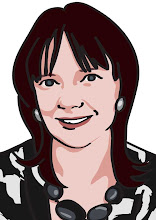
We know intuitively that emotional suffering can be experienced as physical pain, but many times it is difficult for a person to sort out how emotional distress plays a role in the experience of physical pain, and if it does, what to do about it.
The words "to feel" are used to describe both physical and emotional phenomena. Our nervous system feels physical sensations of temperature, pain and pressure, as well as the emotional sensations of pleasure, fear and grief. However, what often happens is that we have a feeling in the body (physical sensation) and then, seconds later or over time, the cognitive mind translates that into emotional sensations (emotional feelings).
Our Western doctors will try to fastidiously separate the physical and the emotional but leading edge neuroscientists are finding the concept of "psychosomatic unity" abides. This means that psychological and physiological processes form one unit. What we feel in our bodies affects our emotions and perceptions (our consciousness). This means that objective experience of sensations (of pain) can not be accurately assessed without integrating information about the subjective experience (emotion associated with that pain).
Therefore for us to feel well, we must deal with the pain and the emotions associated with it. For example, a 35-year-old woman had low back pain. She had suffered a severe horseback riding accident at 19 while attending college. Her low back area was sensitive and jumpy, making it difficult to practice yoga; she would become upset and tearful when she tried to do yoga.
When we looked at the emotional issues and blocked energy surrounding the accident, we attempted to connect the tension in her low back with her memories of the circumstances at the time of the accident.
She relived the experience, which revealed that she actually broke her back and nearly died after the accident. An additionally traumatic and emotional part of the incident was that her parents, who lived just 800 miles away, never came to see her while she was recovering in the hospital.
When she had worked through the emotions connected with the injury, and could then focus on the physical healing of her body, which had never been fully addressed. Thereafter, when her low back muscle and ligament injuries were worked on, her body could accept the treatment and her condition improved significantly.












No comments:
Post a Comment